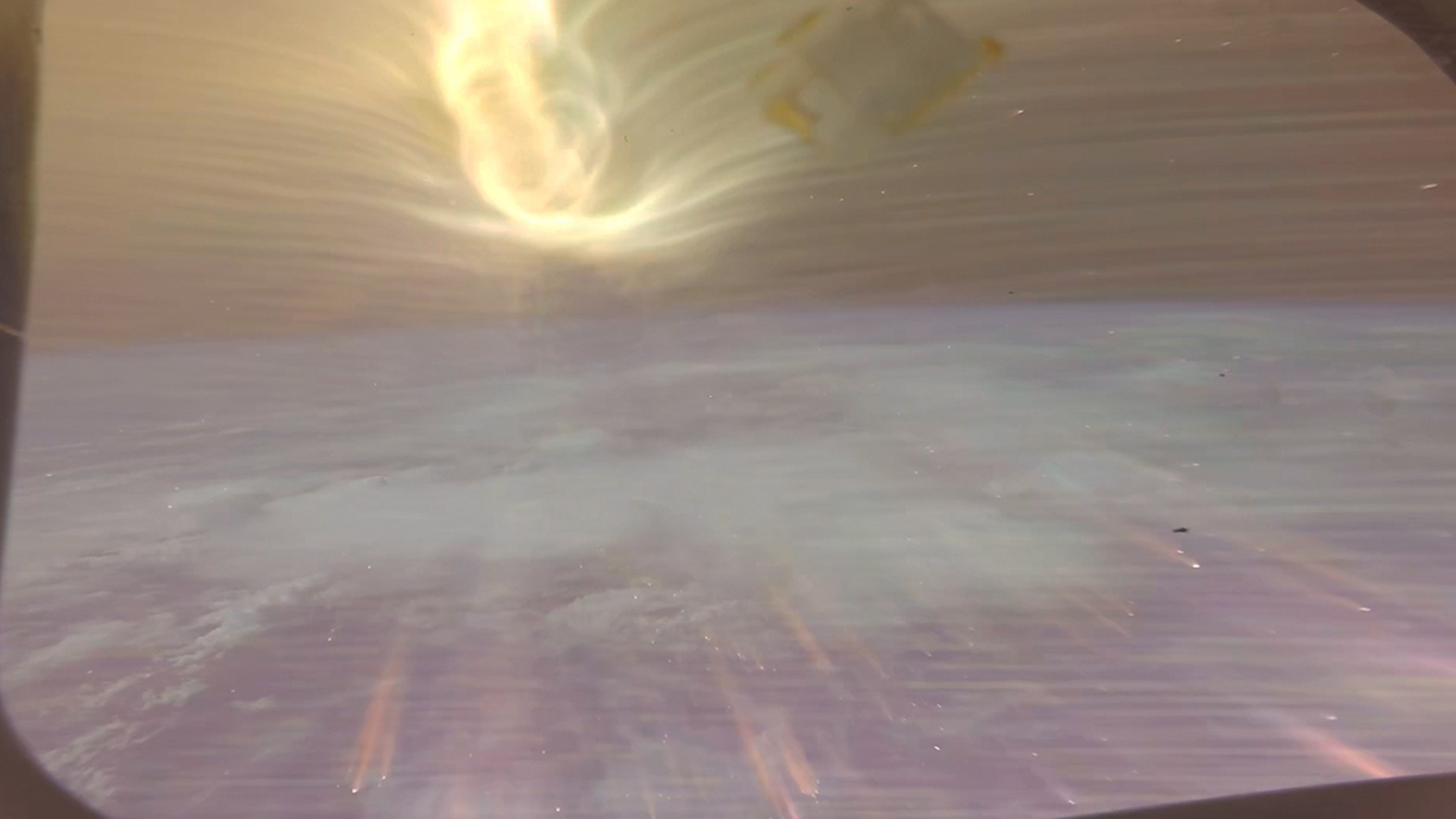Has it already been a year?
On Dec. 11, 2022, NASA's uncrewed Orion capsule returned safely to Earth, bringing a successful end to the landmark Artemis 1 moon mission.
That homecoming was a fiery and dramatic one, as video from Orion shows: The capsule recorded its harrowing plunge through Earth's atmosphere, which left a trail of fire in the sky.
NASA highlighted this amazing footage on Monday (Dec. 11), posting a one-minute clip of it on X (formerly known as Twitter) and linking to the full 25-minute Orion reentry video.

Artemis 1 kicked off on Nov. 16, 2022, when a Space Launch System (SLS) megarocket launched the uncrewed Orion from Kennedy Space Center in Florida.
It was the first-ever liftoff for the SLS, the most powerful rocket currently in operation, and just the second for Orion. The capsule aced a brief test flight to Earth orbit back in 2014, a jaunt that employed a United Launch Alliance Delta IV Heavy rocket.
The Artemis 1 Orion arrived in orbit around the moon on Nov. 25, 2022 and stayed there for nearly a week before beginning the long trek back to Earth. On Dec. 11, the capsule slammed into our planet's thick atmosphere at about 24,500 mph (39,400 kph), posing a stiff challenge to its heat shield, the largest of its kind ever built.
Sign up for the Live Science daily newsletter now
Get the world’s most fascinating discoveries delivered straight to your inbox.
The heat shield passed the test, but not with flying colors.
"Some of the expected char material that we would expect coming back home ablated away differently than what our computer models and what our ground testing predicted," Howard Hu, manager of NASA's Orion Program, said during a call with reporters in March.
"So we had more liberation of the charred material during reentry before we landed than we had expected," he added.
NASA is now gearing up for Artemis 2, the first crewed flight in the Artemis program. Like Artemis 1, it will employ the SLS and Orion. The coming mission will send four astronauts — NASA's Reid Wiseman, Victor Glover and Christina Koch and the Canadian Space Agency's Jeremy Hansen — around the moon and back to Earth.
Artemis 2 is tentatively scheduled to launch in 2024. It will be followed by Artemis 3, which will put astronauts down on the lunar surface in late 2025 or 2026, if all goes according to plan.
The overall Artemis plan calls for the establishment of a permanent, sustainable human presence on and around the moon by the end of the 2020s. The skills and knowledge gained in achieving this goal will help humanity make the leap to Mars in the decades to come, NASA officials say.
Originally posted on Space.com.











